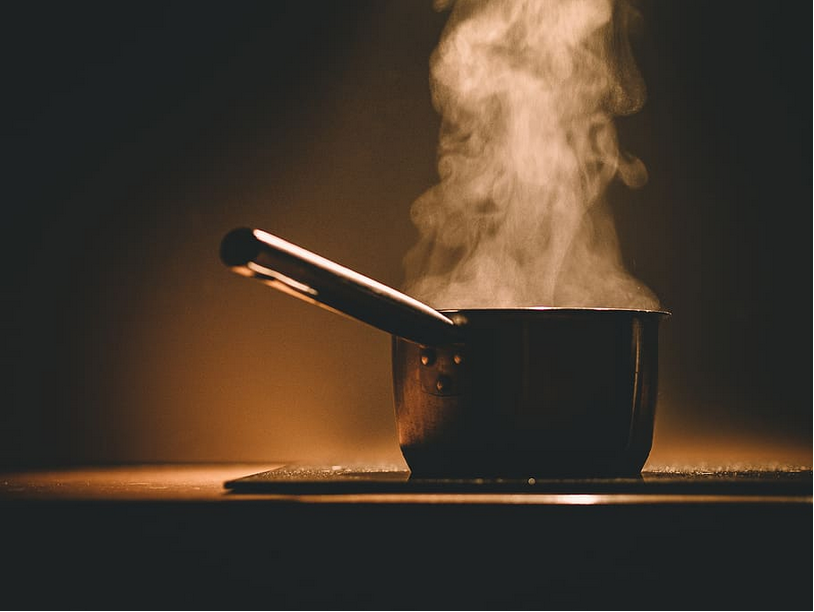 If you cook with natural gas, greenhouse gases are generated as a direct result of cooking your food. In terms of your carbon footprint, cooking with electricity is an obvious improvement: here in Ontario, our electricity is about 90% carbon-free. But did you know that the type of electric stove can make a difference too? Induction cooktops are more efficient than coil or glass cooktops and therefore use less electricity and generate fewer greenhouse gases.
“What is an induction cooktop?” you might ask. It looks just like a glass cooktop, but rather than having a coil element under the surface that must transfer the heat through the glass to the pot, an induction cooker has an electromagnet under the glass surface. The electromagnet induces a small current and magnetic flux in the pot, causing the pot to heat up directly. This is a more efficient process whereby less heat is lost to the surroundings: a benefit that is much appreciated in the summer months. Indeed, the induction cooker is so efficient that it is safe move a pot that has boiled over to wipe down the glass surface. The advantages of an induction cooktop go far beyond energy efficiency, however. Induction cooktops heat things faster. Much faster. As a science fair experiment, my son timed how long it took to boil 1L of water on several cooktops. The results: 9 minutes on a glass cooktop, 6.5 minutes on a coil cooktop, and just 3 minutes on an induction cooktop. What is more, induction cookers are just as responsive as gas cookers. When you turn up or down the heat settings, the heat generated by the pot changes instantaneously. But unlike gas cookers, there are no open flames or combustion gases to worry about. And induction cookers have temperature settings so low that you can do away with the double boilers, even for chocolate. So, why, you might be wondering, are induction cooktops not the norm? They are increasingly common in Europe and parts of Asia, but they have been slow to take off in North America. Induction cooktops are more expensive than other options, and with electricity prices being so low on our continent, saving energy has not been the priority it has been elsewhere. Also, not all cookware works with induction. Only pots and pans with iron or stainless steel in their base can respond to the electromagnet – if a fridge magnet will stick, the electromagnet can do its magic. I have been cooking with induction for many years now and I cannot imagine going back to anything else. It just goes to show: climate solutions can also make our lives better.
0 Comments
|
Archives
January 2021
Categories |

 RSS Feed
RSS Feed